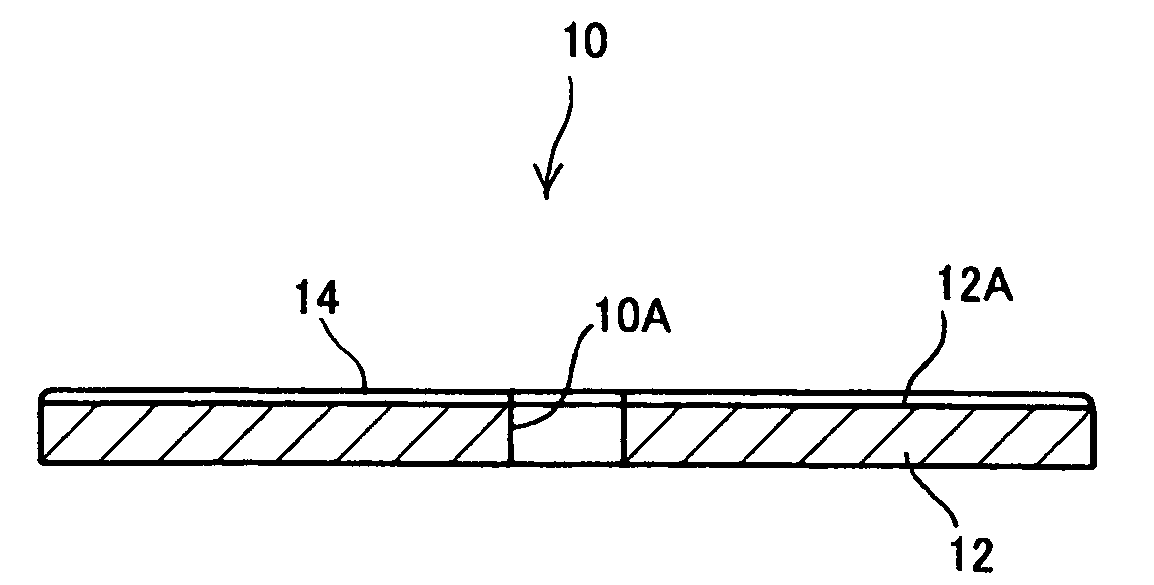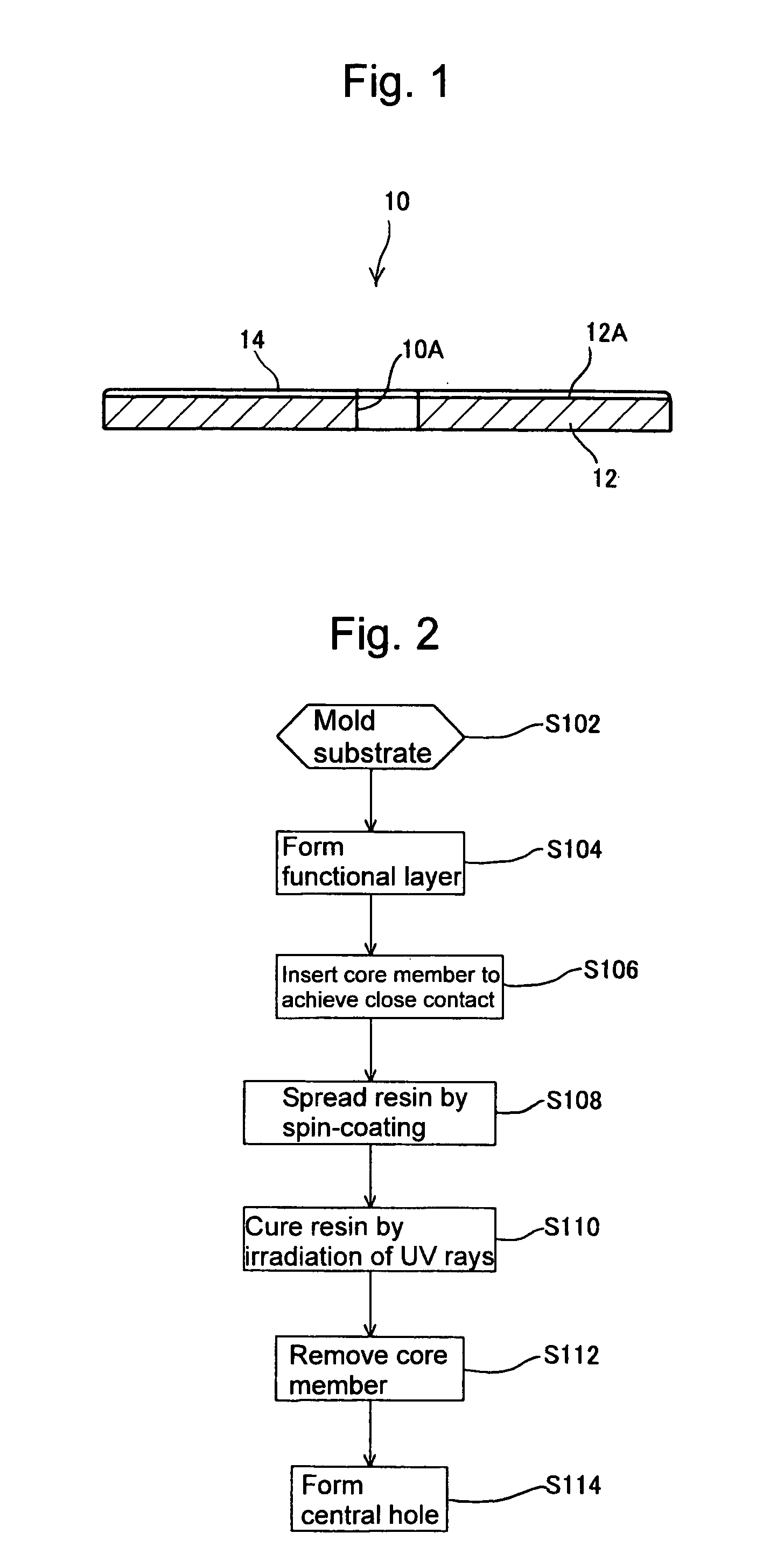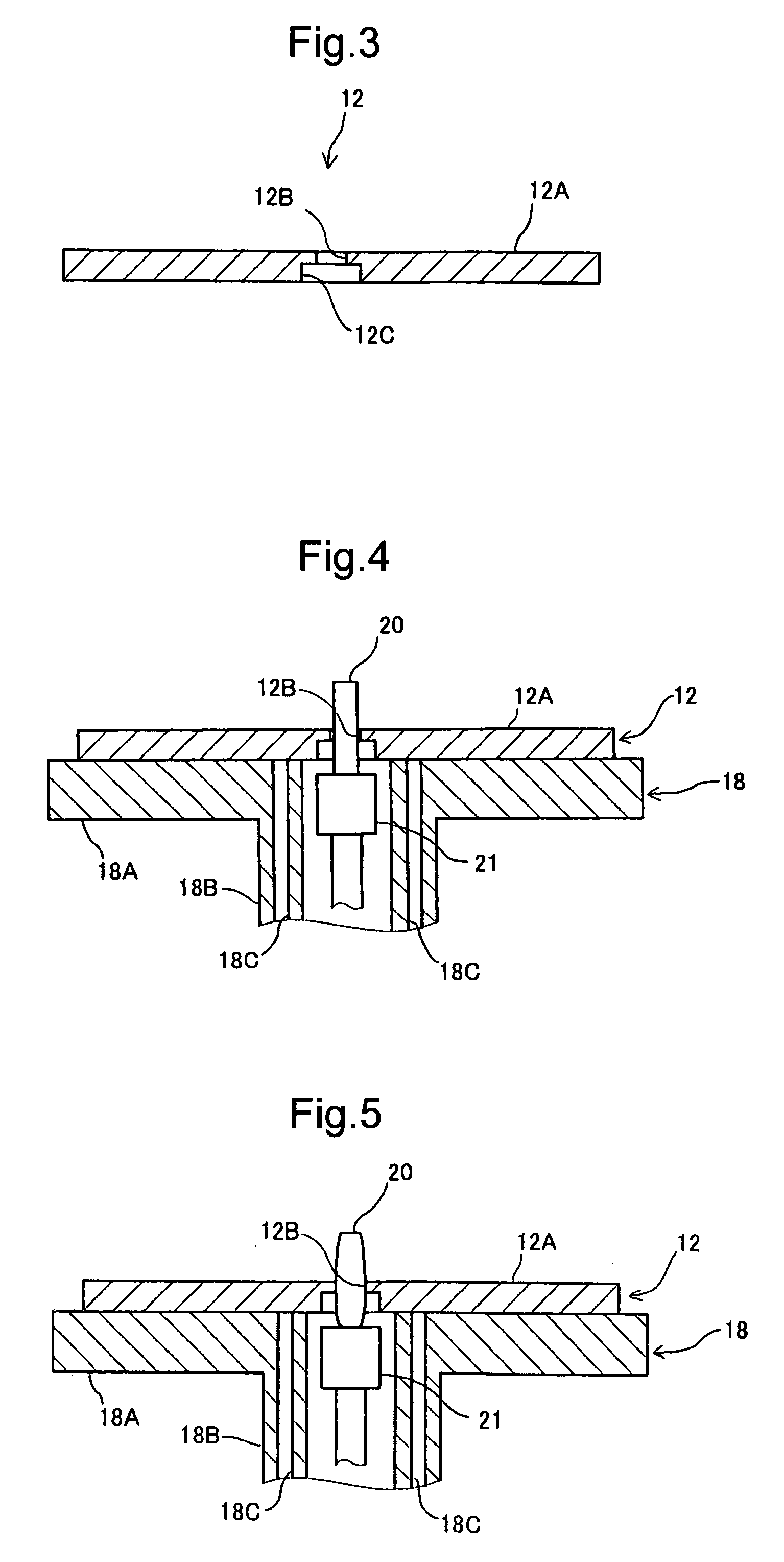Method for manufacturing optical recording medium
- Summary
- Abstract
- Description
- Claims
- Application Information
AI Technical Summary
Benefits of technology
Problems solved by technology
Method used
Image
Examples
examples
[0065] In a manner described in the above exemplary embodiment, ten substrates 12 were molded for each of respective 10 inner diameters of the manufacturing hole 12B, i.e., 2 mm, 4 mm, 5 mm, 6 mm, 7 mm, 8 mm, 9 mm, 10 mm, 12 mm and 14 mm, so that a total of 100 substrates 12 were molded. For each substrate 12, a resin was spread on the information recording surface 12A of the substrate 12 under a condition of spin-coating in which revolutions per minute of the turntable 18 was approximately 2000 rpm. Then, the resin was exposed to UV rays, thereby being cured to form a light transmitting layer 14. In this manner, 100 optical recording media 10 were fabricated. In this manufacturing, the following materials were used for the light transmitting layer 14.
ART RESIN ® UN-5200 (manufactured by Negami77wt %Chemical Industrial Co., Ltd.):ARONIX ® M-315 (manufactured by Toagosei10wt %Co., Ltd.):THF-A (manufactured by Kyoeisha Chemical Co., Ltd.):10wt %Irgacure ® 184 (manufactured by Ciba S...
PUM
| Property | Measurement | Unit |
|---|---|---|
| Diameter | aaaaa | aaaaa |
| Diameter | aaaaa | aaaaa |
| Diameter | aaaaa | aaaaa |
Abstract
Description
Claims
Application Information
 Login to View More
Login to View More - Generate Ideas
- Intellectual Property
- Life Sciences
- Materials
- Tech Scout
- Unparalleled Data Quality
- Higher Quality Content
- 60% Fewer Hallucinations
Browse by: Latest US Patents, China's latest patents, Technical Efficacy Thesaurus, Application Domain, Technology Topic, Popular Technical Reports.
© 2025 PatSnap. All rights reserved.Legal|Privacy policy|Modern Slavery Act Transparency Statement|Sitemap|About US| Contact US: help@patsnap.com



